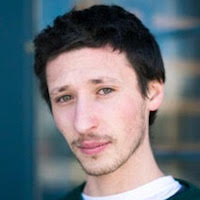
A wise person once said: “To master the breath is to have the strength of 10 tigers.”
I feel that.
Lately, I have been thinking about what it really means to know how to breathe. We all think we know how to breathe, but I don’t believe that many of us actually do. Of course, we know how to breathe naturally, otherwise we would immediately die. However, to be consciously aligned with the breath is something that very few people have learned to cultivate.
Why is learning how to breathe properly an important thing?
The breath is the medium between mind and matter—the link between the psyche and the body.
It is no coincidence that every spiritual practice incorporates the breath. It is the best portal to the present moment, because breathing is the only bodily function that is both conscious and unconscious. This means that we can breathe without having to think about it—and at the same time, we can influence our breathing by thinking about it. We cannot influence the operations of our liver or kidneys on command, or our bowel movements just by thinking, or any other bodily process by sheer force of will, but we can directly influence the breath.
The breath is the key to unlocking the door of our soul. In bringing conscious attention to the breath, we become aware of the immediacy of our own existence; we bring ourselves directly upon the now. There is no longer a division between what we think and what is actually happening. We are simply here, living in the present moment.
So, how are we supposed to breathe?
Here are a few practices that have helped me connect with my breath:
The Wim Hof Method. This is a practice in which we take at least 30 deep breaths in while releasing less oxygen than we take in. We then release the breath and stop breathing in for however long we can stand it. After that, we take a deep breath in and tense our stomach, pressurizing the oxygen into the brain stem. The idea is that we are hyper-oxygenating the body, which feels good and has many health benefits. This is preferably done while lying down or sitting down.
Another practice that I’ve found helpful is something close to the opposite of the previous one. Instead oftaking in powerful breaths to increase oxygen, we take powerful exhales in order to to release carbon dioxide. Any time we might be feeling stressed or anxious, we can bring our attention to the exhale, envisioning that we are blowing away the negative energy and trauma that has built up inside of us. Try doing a few big exhales when feeling overwhelmed, making yourself aware of your body and its connection to your mind. This helps me move away from the hyperactivity of my mind and into the natural peace of the body.
The last technique is somewhere in between the first two. Sit in a meditative posture with legs crossed. Sink into the breath, slowly and gradually. Feel the natural tides of the body, the soothing movements of the in breath and the out breath. We are aware of the natural aliveness of the body, not having the need to change anything about our experience.
From here, begin to expand the gap in between the breaths. Rest in that gap. With every breathing cycle, gently put more emphasis on the space in between the breaths, taking a few extra moments to restfully pause in the gap. The body becomes more calm and the thinking mind comes into a state of ease. We are no longer neurotically moving from one thought to another; rather, we are simply watching the mind as a passive observer. Here, we make our return to the present moment, gracefully and powerfully.
In my experience, becoming more aware of my breathing patterns has made me more confident and secure. When I need to calm down, I know how to calm down. When I need to speed up, I know how to speed up. When I need to go inside of myself, I know how to do that through consciously changing my breathing. It is the most useful skill we could have in navigating our lives.
Having lived with a severe chronic illness for the past few years, knowing how to breathe properly at any given moment has been vital to my quality of life. Whether I am physically debilitated, emotionally crippled, in extreme pain, or just stressed out, the ability to uncover the present moment simply through making myself conscious of how I breathe is always a valuable tool.
Follow the breath, and see what happens. The body is our greatest teacher.
~
Relephant:
Breathing like this Can Save Lives.
And Then There Was Breath.
~
Author: Samuel Kronen
Image: Flickr/dom fellowes
Image: Flickr/dom fellowes

No comments:
Post a Comment